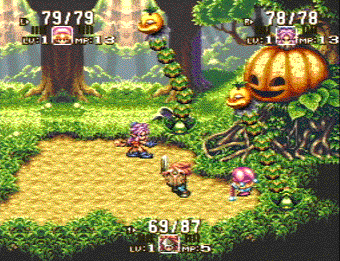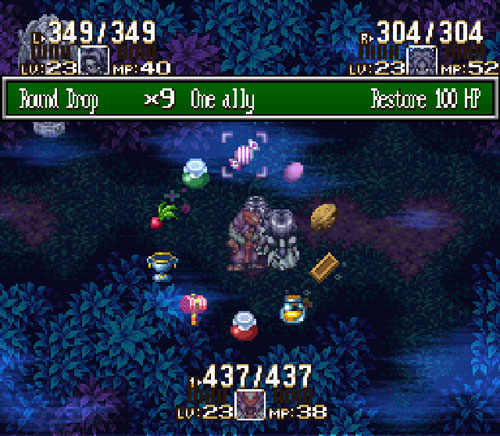Last updated on March 4, 2013
Therefore I urge you, brethren, by the mercies of God, to present your bodies a living and holy sacrifice, acceptable to God, which is your spiritual service of worship. 2 And do not be conformed to this world, but be transformed by the renewing of your mind, so that you may prove what the will of God is, that which is good and acceptable and perfect.
Romans 12
Talk about taking a verse out of context to talk about video games! In the spirit of Romans 12, however, I find that I have a gift for iconoclasm, both in the frivoloties of video game criticism and in real life issues. In the body of Christ, there’s a role for everybody, Why shouldn’t this apply here, as well?
Are some things as good as we remember? Or are we merely playing with our perception of “good” and “awesome” because of a brand name?
If video game, in general, are “time-wasters”, then there’s no real difference. i assume, though, that many people don’t think that way. People have been trying to justify video games as an “art form” for a decade or so, yet even the Smithsonian can’t figure out why without a breathless and problematic apologetic. It’s an emotional argument because of nostalgic attachment. It’s not displaying sound judgment, that’s for sure.
I’m not going down that weird road where we declare a game “evil” because it isn’t good, either. But, clearly, there’s a need for sound thinking that doesn’t involve contextualized criticism, nor some nostalgic look at the past. Even with brand names attached, a bad game is a bad game.
And Seiken Densetsu 3 is a bad game.
My love and appreciation for Secret of Mana (or Seiken Densetsu II, for you purists) cannot be underestimated. It was the first truly epic game I ever played, and even with its myriad flaws (which, in retrospect, are pretty obvious and definitely a turnoff for anyone who actually plays it now), I enjoy it now. It has a perfect combination of exploration, combat, and difficulty – only the magic system and the ability to grind (if you wish – it’s VERY tedious, though) keep it from the upper echelons of Square’s defining years. However, its sequels and spinoffs never really captured the magic in the way that the second game of the Seiken Densetsu series did for a lot of American gamers of the early 1990s. It amazes me that such a high water mark could bring a series down so fast with such a simple concept of action role-playing game; you’d think it’d be a no-brainer on Square-Enix’s part, but the series has been put to bed due to a series of failures and frankly odd choices.
Where did they go wrong?
Perhaps making the series into the new SaGa wasn’t the best idea in the world, but that’s getting ahead of myself. There’s a definite trend to the series’ fall from grace, and much of it has to do with the game most revered amongst the romhacking/emulator/import communities – Seiken Densetsu 3. As far as “holy grails” go, this is/was one of them in the gaming community. People would literally import it and fumble their way through unintelligible Japanese text just to have some of the experience, the magic, of a sequel to a well-loved game. I certainly didn’t have the cash for it, but seeing pictures of a game called “SD3” in the back of a EGM issue seemed uncannily similar to Secret of Mana. A giant pumpkin and three players fighting against it – wow, I said to myself, that’d be cool.
This is the exact same picture, no joke. Ah, nostalgia.
Years passed. The Internet “happened”. Once I had this tool, this wealth of information, I began to search around for what that game was, exactly (along with Dragon Ball Z: Hyper Dimension, even though no one knew what DBZ was until the early 00s at this time. Still looked cool). Once I found emulators, well…it was full speed ahead. I found games I remembered from arcades long past, games I wanted to rent but never did, and yes, Seiken Densetsu 3, fully translated by Neil Corlett. As far I’ve I looked, it’s a game that took lots of reprogramming to make available for an English audience. Let’s say the unofficial localization is probably better than the real Square could have done, considering how bad Secret of Mana is sometimes (misleading or confusing directions are a common occurrence).
Still, it was a huge disspointment to finally play this game. I never got past the intro sections, honestly, only getting far enough to finish the first real boss fight (the giant crab thing).
Now, before you get into a tizzy about me bashing the game, I am of the opinion that a game should be evaluated on its merits, whether or not a particular brand name is attached. That might seem a rather obvious stance that everyone takes to criticism, but unfortunately it is not. I might love a particular series and its aesthetic/narrative qualities, but that doesn’t give it a pass by default. So it will be here.
First, we need to examine the circumstances surrounding its arrival. Never released on Western shores, there’s a variety of reasons why it was never localized. First, the game was released fairly late in the SNES’s life cycle, hence rendering it an obsolete piece of software in the age of 3D graphics and pointy polygons. Although we all see the beauty of 2D animation now, it was understood as a relic of the past in that time, and thus its reception would have been horrible right from the outset. Hence, it made business sense that Square didn’t want to spend the time manufacturing expensive, technologically outdated “carts” at the beginning of the 32-bit era.
Second, the game contains myriad bugs that are all over the place. Certain stats don’t work; the game freezes in weird spots. I’m not sure if this is an emulator issue or not, but I assume it isn’t after having read quite a few forum threads to this effect. That’s pretty much the opposite of any console game I have ever played – even now, most games released on Nintendo consoles have next to no visible or game-breaking bugs, but Seiken Densetsu 3 seems to be one of those rare exceptions, unfortunately.
The game, quite literally, is unfinished. It’s beautiful, granted, and has some interesting mechanics like the job class system, but these require pointless and long trips to certain location in the game world when you reach a certain level. They could have just as easily just given you a choice, but instead you get additional padding. One has to ask: why? What could motivate them to release the game unfinished when they knew they had a built-in fanbase from the first game?
Especially when it comes to a gamebreaker, there’s no excuse. Last year, I bought the original cartridge in an incredibly lucky eBay bid; I set up a rom/emulator thing on my TV, and I had two people ready and set to go. Five hours in, we beat the Ghost Ship boss, cut to volcano, cut to black. Game over. Sure, I patched the game for three players, but it’s supposed to have three player support in the first place! That was a selling point of the original – what happened?
At that point, we were pretty much done with the game. It’s simply not that much fun to play because it is, in no way, a Secret of Mana style game. The combat does not compare in any way. Firstly, avoiding attacks is a big no-no; every boss character has tons of spells to throw at the party that basically freeze the game and leave you to watch for about 5-10 seconds sometimes. They are very pretty, but they break the flow of the game immensely to the point where attacks that should hit, miss. It’s frustrating at the least. Whereas Final Fantasy VII makes this work with impressive graphics, it’s a bit different comparing a menu-based strategy battle with real-time combat. It slows the pace down much further than an action game, which is supposed to be EXCITING, not BORING.
After the tiny cutscene, you take damage, thrown somewhere in the arena which you are fighting, and then you have to heal. There’s no way to avoid it, so you just use your healing items until your enemy expires. What strategy is there in that? This happens in the original, but not to the degree that this game throws attacks at the player. Some bosses just cast spells constantly, with little or no downtime. Have fun going to the menus, because you’ll be doing that a lot!
Worst of all, the characters don’t even get any spells or abilities until the supposed “class change” at level 18. Given the prior game’s continual progress in terms of character abilities (thus forcing pro-con decisions on which magic to level up, what items to buy, who did what role in some fights, etc.), the big strategy here is: hack, hack, hack, I win. If you have enough items, you win – why can I access my storage box in combat? Why isn’t there a bank that forces some resource management? The sign of a bad system is giving the player too many options for the same goal, and that’s the case here. If I can carry 99 healing items, what’s the point? Furthermore, the day/night system (certain elements work better at certain times of the day), while interesting, doesn’t actually do much other than look pretty. I never found much use for it, anyway, other than forcing me to go to an inn when the story wouldn’t progress until I met person X at time T – not a fun mechanic.
As a sequel, SD3 is disingenuous because it presents the exact same scenario, nearly, as the first game (gather up elemental spirits and all that jazz), but doesn’t let you use them until you level up AND find a Mana Stone in which to use (once per character, mind you!) to make it happen. Honestly, the game lacked strategy to the point where the three of us were bored out of our minds. The game is sluggish all around – even the intro sequence takes up to an hour, whereas the original Secret of Mana thrust you into the game’s systems nearly immediately. This obviously became a trend in the later Squaresoft releases, but here, given the real-time combat system, it’s just jarring and inappropriate. Especially important to note is that the story is no more complex than the first game – there’s just more dialogue, most of it inane and perfunctory anyway! This is no knock on the translators, as they did a fantastic job, but the game underlining such a successful translation is the problem here.
To think that this came from the same design team as the original is almost baffling. Series creator Koichi Ishii and Secret of Mana director Hiromichi Tanaka obviously tried for something new, but didn’t quite hit the mark. It’s an assemblage of half-baked ideas and unfinished, and unconnected, tangents. There’s a lot of cool ideas, but they don’t coalesce into something whole. It’s almost as if the SaGa series began infiltrating the Seiken Densetsu series – but that series works from the ground up with free-form design in mind. That’s the problem with the series going forward, with too many ideas and little focus.
It’s just the beginning, though…



